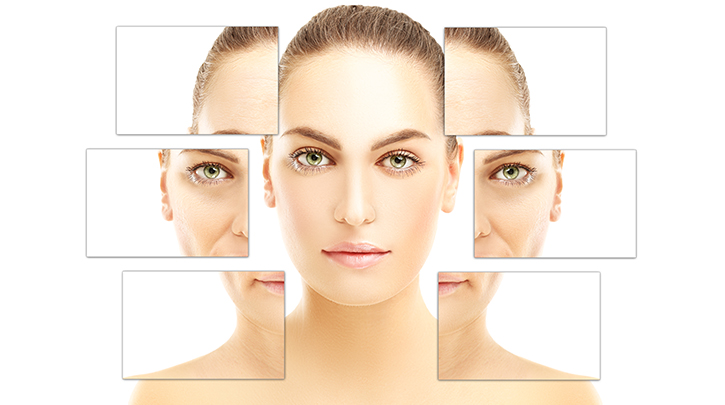With the onset of selfie culture and the growing openness in discussions surrounding aesthetic treatments, it seems natural that we’re seeing a growing curiosity from prospective patients regarding medical aesthetic options at a younger age. But with Botox being recommended to patients are early as the time they hit their 20s and celebrities more openly admitting to their cosmetic procedures, including one 17-year-old who was credited with a 70% increase in inquiries regarding lip filler in the U.K. alone, it seems inquiries from younger patients may be expected. Of course, the ethics surrounding aesthetic treatments for teens is an area that remains a little murky. That’s why we’ve rounded up a list of the top guidelines when considering treatments for prospective patients under the age of 18.
9 Guidelines to Consider Before Treating Young Patients
- Ensure a Guardian Is Present: Depending on the area in which your clinic or medispa operates, there are different regulations regarding what treatments may be offered to patients under the age of 18. Regardless, it’s recommended that a legal guardian be present to offer consent and legally represent the patient’s wishes.
- Consider Necessity: It’s important to be frank with patients under 18 years old and their guardians. Elective procedures and treatments should be seriously considered, and all the associated risks need to be clearly understood.
- Fillers and Elective Surgery Are a “No”: Teenage bodies are still developing. The patient’s appearance will continue to mature, meaning results from elective fillers, injectables, and invasive cosmetic surgery may alter as they mature and risk requiring a second procedure or touchup injections at best. Medical exceptions may be made but should be cautiously considered.
- Acne Treatments Are a “Yes”: While a guardian should still be present to ensure the patient is fully aware of any potential risks and speak to contraindications, medical aesthetic treatments for acne reduction may be considered a more acceptable treatment for some young patients struggling with chronic acne breakouts.
- Fat Reduction Treatments Can Wait: While non-invasive body shaping treatments are a better option than invasive fat reduction procedures for patients in this age range, it’s still best to delay treatment for a couple years. According to most growth charts, females in particular gain a statistically significant amount of weight from 18 to 21 years of age, developing a curvier appearance. The resulting changes may alter their desire to seek surgical treatment or impact their level of satisfaction with the results.
- Psychological Screening: Maturity may be a concern with younger patients as it can be difficult to gauge their influences and intentions for seeking treatment, alongside whether they fully comprehend any potential risks. The best way to determine whether a prospective teenage patient is mature enough to be considered a potential candidate for treatment is through the use of a psychological screening test.
- Consider Commitment: Opting into a treatment at a younger age may be a longer commitment to their new aesthetic. For example, lip injections were an in-demand treatment among young patients not all that long ago. However, this is the type of treatment that needs to be repeated with regular sessions in order to maintain appearance. As a result, younger patients should also be screened for their commitment to regular upkeep if that may be an intrinsic factor in the aesthetic treatment they’re considering.
- Repeat the Risks: Teenagers, and the public in general, are acknowledged to often inflate the benefits and minimize risks, particularly when it comes to aesthetic treatments. While surgical options inevitably carry greater risk compared to their minimally invasive or non-invasive counterparts, it remains your duty as a treatment provider to ensure patients are properly screened and sign their consent and understanding prior to performing any treatment. As such, it’s recommended that you cover these bases and offer young patients a cooling off period to take home educational materials and seriously consider their choice prior to committing.
- Note the Costs: While it might not be ideal to place a fine lens over pricing, younger patients often have limited disposable income and guardians may not be willing to spend too much to cover the treatment. As such, these patients may seek deals that help save on cost but may risk inadequate results, risking a negative online review or word of mouth. Pay attention to the cost conversation and know how to recognize a red flag when you see it.
The Main Takeaway
Understanding regional regulations and establishing a guidebook for determining appropriate treatments for young patients (which may include defining what may be too young) are two necessary steps to ensure you and your staff are treating these patients in a responsible manner. Suggesting high-quality skin care or non-invasive treatment alternatives may be a more conservative way to deliver the results these patients want with little to no downtime and built-in safety features to ensure patient comfort. Further, a comprehensive long-term treatment plan may begin with preventative solutions and skin care essentials, working patients along to non-invasive and minimally invasive procedures once they mature. This is a safe and measured solution to ensure patient safety and optimal efficacy.
For versatility, consider Venus Versa™, a multi-treatment platform that offers some of the industry’s most in-demand aesthetic services—from acne reduction treatments to photorejuvenation, and IPL hair removal, among others—all in one easy-to-use workstation. Utilizing different applicators, physicians can customize a host of treatments to better serve a wider patient base. For those interested in learning more, contact an expert today using the contact button below.
Practice Enhancement Tips






